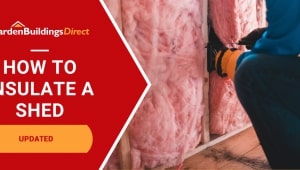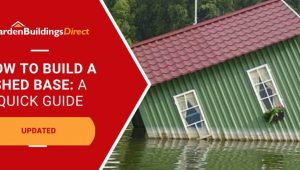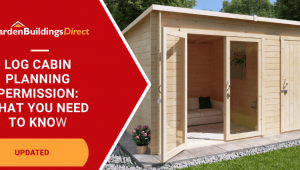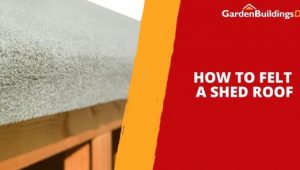Jump to:
If you’re looking for a practical and stylish way to expand your living space outdoors, you’ve probably come across two popular options: log cabins and insulated garden rooms. While they share some similarities, they offer different benefits depending on your budget, usage, and comfort requirements.
So what’s the difference between a log cabin and a garden room? And which one is right for you?
Let’s break it down.
Log Cabin vs Garden Room – What’s the Difference?
At a glance:
| Feature | Log Cabin | Insulated Garden Room |
|---|---|---|
| Insulation | Natural (from timber thickness) | Structurally insulated panels and double glazing |
| Usage | Daytime use, hobbies, storage, occasional office | Year-round use, garden office, guest room |
| Comfort | Effective for up to 11 months of the year (depending on thickness) | Year-round comfort by design |
| Price | More affordable | Higher investment |
| Installation | Log-by-log install – may take longer | Panel-based for easy installation |
| Modifiability | Can be upgraded with insulation, but may void warranty | Already insulated – no modification needed |
Check out the video below to see what Steve Maxwell, of Bailey Line Road, thinks of SIPs:
Can a Log Cabin Be a Garden Room?
Technically, yes, a log cabin can be a type of garden room. Many people use log cabins as studios, workshops, or even garden offices.
However, most log cabins rely on timber thickness alone for insulation. This can provide some thermal protection, especially in thicker models (like 44mm walls), but it’s not quite enough for year-round comfort unless you make upgrades or use a lot of heating through the winter.
How Well-Insulated Are Log Cabins?
Log cabins can vary greatly in their thermal performance. Here’s what to consider:
Timber Thickness: Thicker logs (e.g. 44mm or more) offer better natural insulation and help retain heat.
Double Glazing Upgrades: Especially if you opt for uPVC double-glazed windows and doors, you’ll get a significant boost in heat loss.
DIY Insulation: You can retrofit a log cabin with floor, wall, and roof insulation. However, modifying the structure could void the manufacturer’s warranty — something to be aware of before making alterations.
Log cabins are best for hobbies, workshops, and daytime use.
What Makes Insulated Garden Rooms Different?
Insulated garden rooms are designed from the ground up to be fully thermally efficient. They typically use materials like structurally insulated panels (SIPs), which offer excellent insulation built into the walls, floor, and roof.
They often include:
- Insulation (like EPS foam) inside the roof, floor and walls
Double-glazed windows by default
- Total wall thickness over 60mm
With no need for modifications or upgrades, they’re ideal for creating a true extension of your home in your garden.
Insulated rooms are best for a full-time garden office, year-round use, and evening activities.
Cost vs Comfort: What’s Worth It for You?
If you’re weighing up the options, the key consideration is how often — and when — you’ll be using the space.
Choose a log cabin if you want a more affordable building for hobbies, storage, or occasional daytime work, and you don’t mind a few upgrades to improve comfort.
Choose an insulated garden room if you need a quick-install solution that’s comfortable all year long, with no extra work required.
The Final Verdict
A log cabin offers great value, flexibility, and solid natural insulation — especially in thicker models with uPVC upgrades.
An insulated garden room is the best choice for those who want simplicity, comfort, and long-term functionality, especially if you’re planning daily use or want a true home extension.
If you’re leaning towards a traditional timber structure but aren’t sure which thickness or glazing options to choose, our guide to choosing a log cabin breaks down everything from construction types to common use cases.
If the insulated range is what you want, use our guide to compare garden rooms and find the one for you.
Shop Garden Offices




